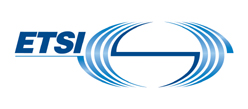Mentouring Protocol with Live Bootcamp for Cybersecurity Experts
Horizontal standards for security requirements
Horizontal standards for vulnerability requirements
Vertical standards for security requirements
Cyber Resilience Through Standards: Strengthening the Micro-SME and Female Leadership Perspectives
Vertical Standards for Security Requirements
Strengthening the Micro-SME and Female Leadership Perspectives in the CRA - PROJECT CONTINUATION
Vertical Standards for Security Requirements
What does the work you will carry out for the CYBERSTAND SSP consist of?
My work focuses on mentoring cybersecurity experts to enhance their understanding of the three dimensions of quality infrastructures—standardization, conformity assessment, and metrology—with a particular emphasis on the key principles and best practices of the standardization process. Through a structured mentoring and bootcamp protocol, I provide hands-on guidance, including pre- and post-meeting briefings, supervised participation in technical commiittees and work groups, and process-focused capacity building. This ensures more effective and timely contributions to CRA-related standardization efforts.
What is the expected result and impact of this activity?
This initiative will improve the efficiency of CRA-related standardization by equipping cybersecurity professionals with procedural expertise. By reducing delays in standardization deliverables and strengthening expert contributions, the project accelerates the development of cybersecurity standards essential for CRA implementation. Additionally, the mentoring and bootcamp protocol creates a scalable model for training future experts, reinforcing Europe’s leadership in global cybersecurity standardization.
Which aspects of the Cyber Resilience Act (CRA) standardisation are you focusing on?
My work covers all three dimensions of the CRA standardization request: horizontal security requirements, vulnerability handling requirements, and vertical security requirements. By mentoring experts contributing to standards supporting the CRA, I help ensure that these standards are developed efficiently and in alignment with EU cybersecurity objectives. The initiative strengthens Europe’s ability to establish robust, harmonized cybersecurity frameworks and facilitates compliance with CRA requirements.
What does the work you will carry out for the CYBERSTAND SSP consist of?
I will support the development of CRA-related vertical cybersecurity standards by coordinating the ETSI CYBER-EUSR Working Group. This includes planning and chairing meetings, managing workflows, resolving bottlenecks, and ensuring articulation between ETSI and CEN-CENELEC activities. My work ensures that standardization progresses efficiently and in line with EU objectives.
What is the expected result and impact of this activity?
The activity supports the delivery of nearly 20 key cybersecurity standards that enable conformity with the CRA. It helps ensure technical consistency across domains, improves collaboration between European Standards Organisations, and strengthens the relevance and applicability of the resulting standards. This contributes to a stronger, more unified European cybersecurity framework and supports the EU’s digital resilience strategy.
Which aspects of the Cyber Resilience Act (CRA) standardisation are you focusing on?
My focus is on the development of vertical standards specified in Annex I of the CRA, particularly items 17 to 27 and 31 to 36. These standards address cybersecurity requirements for a broad range of digital products, such as embedded browsers, smart home devices, VPNs, and network security components, contributing to their secure design and compliance with EU regulation.
What does the work you will carry out for the CYBERSTAND SSP consist of?
I will support the development of CRA-related vertical cybersecurity standards by coordinating the ETSI CYBER-EUSR Working Group. This includes planning and chairing meetings, managing workflows, resolving bottlenecks, and ensuring articulation between ETSI and CEN-CENELEC activities. My work ensures that standardization progresses efficiently and in line with EU objectives.
What is the expected result and impact of this activity?
The activity supports the delivery of nearly 20 key cybersecurity standards that enable conformity with the CRA. It helps ensure technical consistency across domains, improves collaboration between European Standards Organisations, and strengthens the relevance and applicability of the resulting standards. This contributes to a stronger, more unified European cybersecurity framework and supports the EU’s digital resilience strategy.
Which aspects of the Cyber Resilience Act (CRA) standardisation are you focusing on?
My focus is on the development of vertical standards specified in Annex I of the CRA, particularly items 17 to 27 and 31 to 36. These standards address cybersecurity requirements for a broad range of digital products, such as embedded browsers, smart home devices, VPNs, and network security components, contributing to their secure design and compliance with EU regulation.


